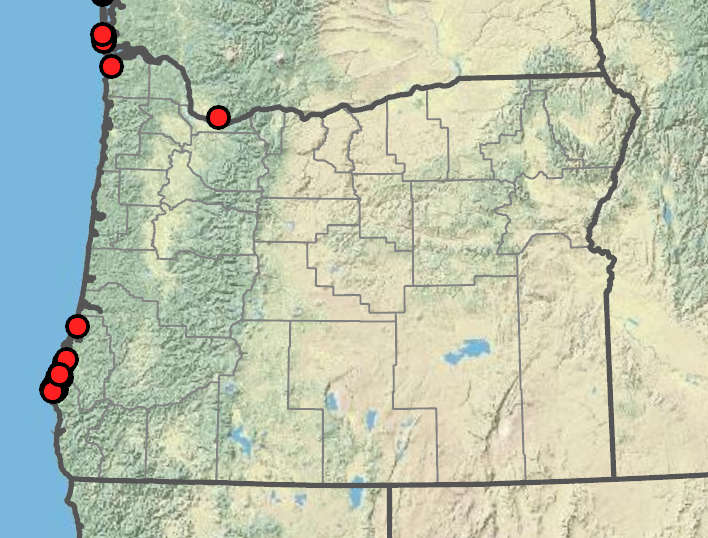Juncus canadensis
Juncus breweri
Canada rush, Canadian rush
Brewer's rush, salt rush
basal and cauline; round; hollow, septate, 1–2 mm wide;
auricles 1–1.2 mm.
lacking blades; older distal sheaths 2–13 cm, dark brown; shiny;
apex usually symmetrical; thin.
panicles of 3–50 clusters; clusters 5–50-flowered, not obscured by inflorescence bract.
dense head-like clusters of 10–20 flowers;
branches obscured.
tepals 6, green; reddish, or pale brown;
tips acuminate;
stamens 3;
filaments 0.8–1.5 mm;
anthers 0.3–0.5 mm;
styles 0.2–0.3 mm.
tepals 6, usually 6–8 mm, dark brown- or black-striped;
stamens 6;
filaments 0.4–0.7 mm;
anthers 1.6–2.8 mm;
styles 0.7–1.4 mm.
usually 0–1 mm longer than the tepals, dark brown, 1-chambered.
3–5 mm; shorter than or equaling the tepals, dark brown;
apex obtuse to acute, 3-chambered.
narrowly ellipsoid to linear, 1.25–1.9 × 0.2–0.25 mm;
bodies 0.5– 0.8 mm; tails 0.3–0.5 mm, 0.5–1 times as long as seed body.
0.7–1.1 × 0.4–0.6 mm, not apiculate.
=80.
Juncus canadensis
Juncus breweri
Shores, ponds, peatlands, disturbed sandy acidic wet ground, cranberry farms, ditches. 0–100 m. Est. WA; north to British Columbia; eastern North America; Europe, New Zealand. Exotic.
This species was introduced by cranberry agriculture and is spreading into natural wetlands. Some authors suggest rare flowers have 6 stamens.
Dunes, sandy swales, sandy ditches. 0–50 m. Est. CA, WA, north to British Columbia. Native.
The little-known Juncus lescurii may represent a series of fertile hybrids between J. balticus and J. breweri and is intermediate in inflorescence characters. Juncus breweri has a denser and more nearly globose inflorescence than the other two taxa, with its inflorescence branches obscured by the compact arrangement of flowers or capsules.
Peter Zika
Peter Zika
- Local floras:
BC,
OR,
WA
- Local Web sites:
Flora NW,
PNW Herbaria
WildflowerSearch
iNaturalist (observations)
USDA Plants Database
- LBJ Wildflower Center
- SEINet
- Plants of the World Online
- Encyclopedia of Life
- Wikipedia
- Google Image Search
- Local floras:
BC,
CA,
OR,
WA
- Local Web sites:
CalFlora,
CalPhotos,
Flora NW,
PNW Herbaria
WildflowerSearch
iNaturalist (observations)
USDA Plants Database
- LBJ Wildflower Center
- SEINet
- Plants of the World Online
- Encyclopedia of Life
- Wikipedia
- Google Image Search


